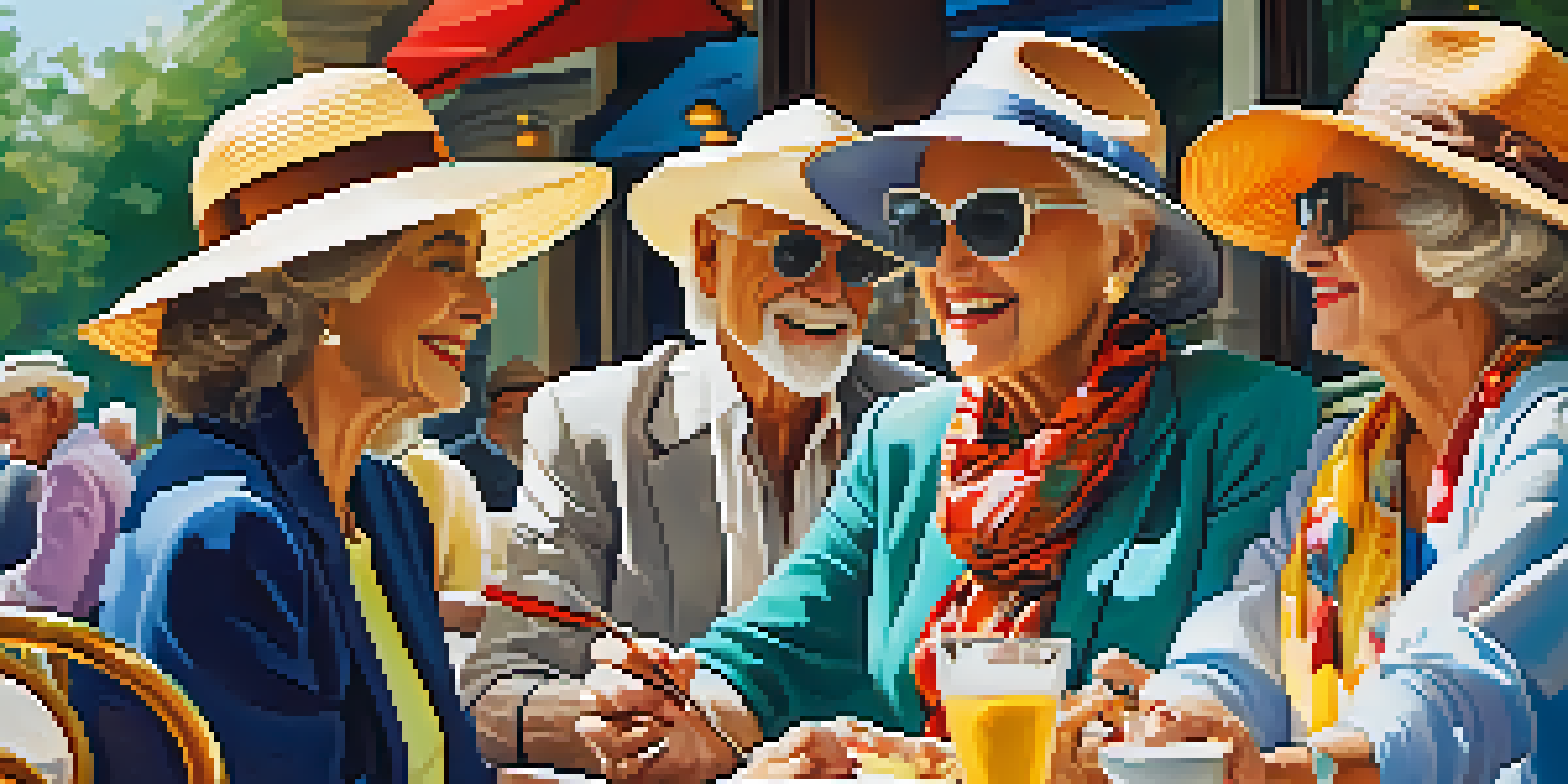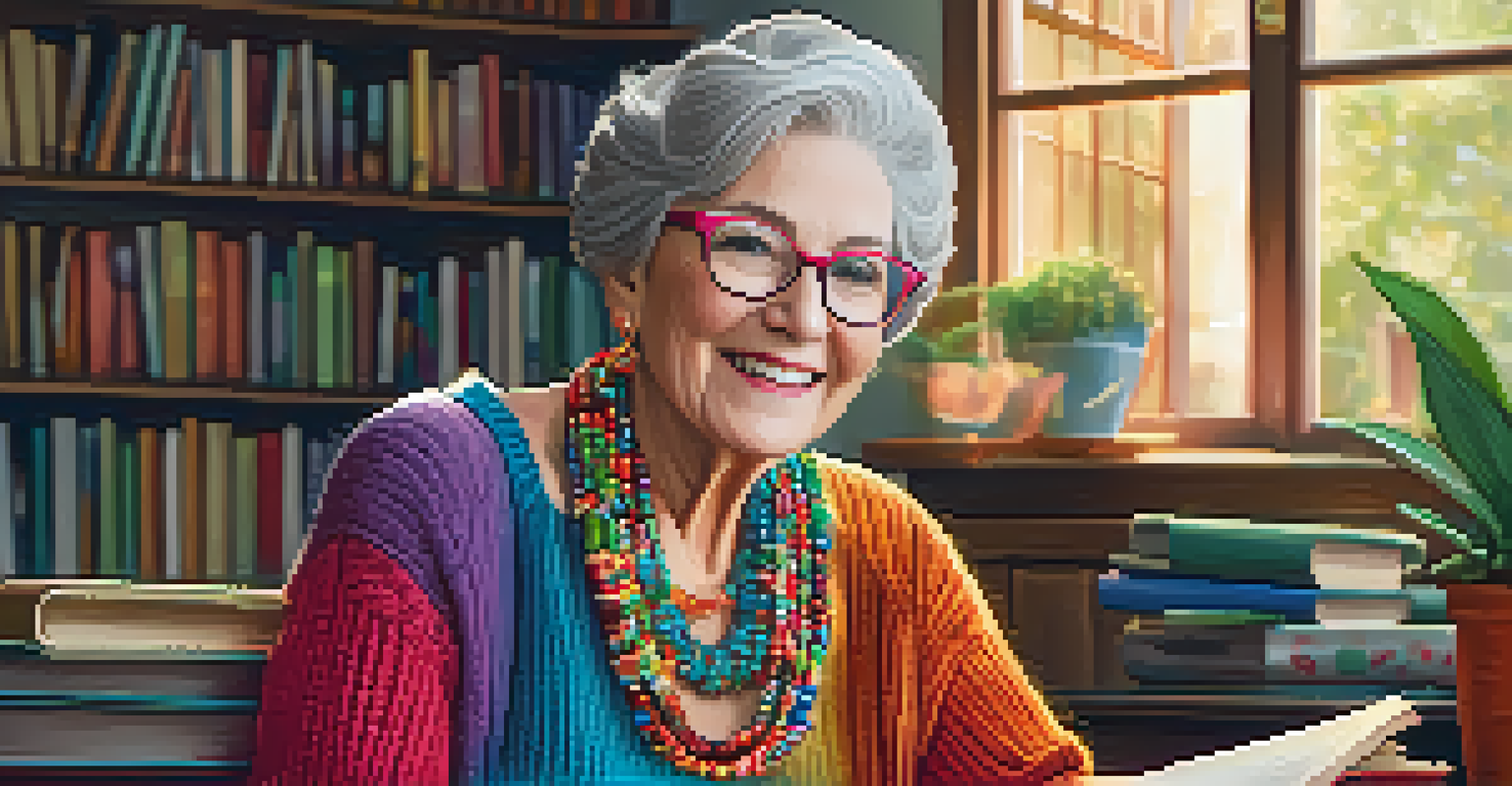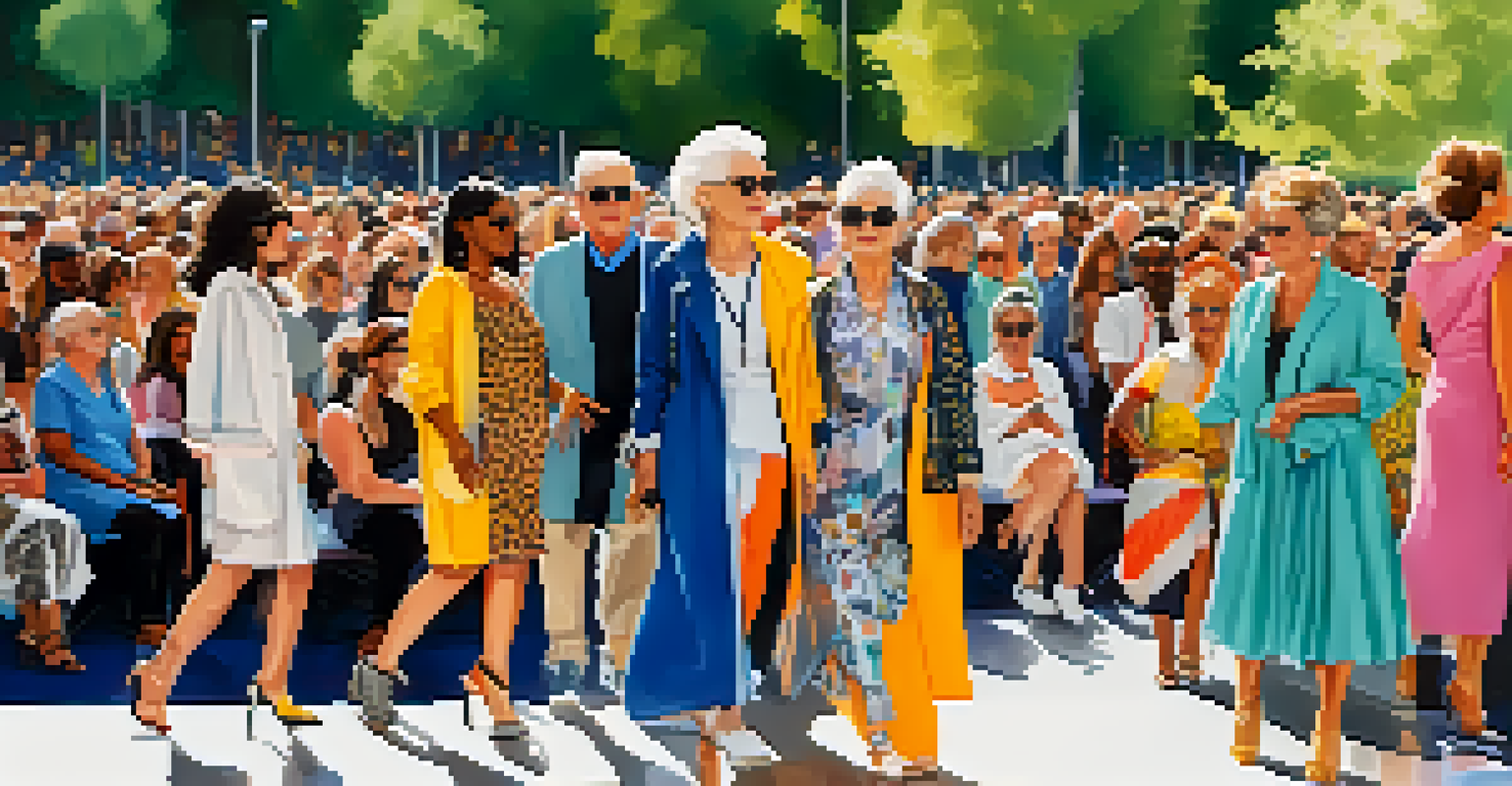The Evolution of Senior Fashion: From Past to Present

A Glance Back: Senior Fashion in the Early 20th Century
In the early 20th century, fashion for seniors was largely defined by practicality and modesty. Clothing often consisted of long dresses for women and suits for men, reflecting societal norms of the time. Seniors dressed to blend in with the family and community, emphasizing comfort over personal expression.
Fashion is the armor to survive the reality of everyday life.
During this period, materials like wool, cotton, and linen were popular due to their durability. Fashion was not just about looking good; it was about being functional and appropriate for various occasions. This approach to fashion mirrored the values of a generation that prioritized stability and tradition.
As the decades progressed, changes in culture and lifestyle began to influence senior fashion. The post-war era saw a shift towards more colorful and stylish options, as newfound freedoms allowed older adults to embrace a bit more flair in their clothing choices.
The 1960s and 1970s: Embracing Change in Senior Style
The 1960s marked a pivotal moment in fashion history, with youth culture challenging the status quo. Seniors began to adopt more vibrant styles, influenced by the counterculture movement. This era welcomed bold patterns, bell-bottoms, and even miniskirts, reflecting a desire for freedom and self-expression.

During the 1970s, the notion of aging began to shift, with many seniors actively participating in social movements. Fashion became an extension of their personalities, allowing them to showcase their individuality. Accessories like colorful scarves and statement jewelry helped seniors embrace trends while still remaining age-appropriate.
Evolution of Senior Fashion Styles
Senior fashion has transformed from practical and modest attire to stylish and expressive clothing that embraces individuality.
This period set the stage for future generations of seniors, who would continue to redefine what it means to dress stylishly at an older age. The emphasis on personality over age began to take root, paving the way for a more diverse approach to senior fashion.
The 1980s and 1990s: Power Dressing for Seniors
In the 1980s, fashion took a bold turn with the rise of power dressing. Seniors began to embrace this trend, opting for tailored suits and bold colors that demanded attention. This shift reflected a growing confidence among older adults, who were increasingly seen as influential members of society.
Style is a way to say who you are without having to speak.
The concept of aging gracefully was redefined, as seniors experimented with accessories like oversized glasses and chunky jewelry. This era emphasized the idea that style knows no age, encouraging seniors to step out of their comfort zones and embrace trends that were once the domain of younger generations.
By the 1990s, comfort began to merge with style, leading to a more casual approach in senior fashion. Athleisure started to gain popularity, allowing seniors to blend comfort with a sense of chic, further solidifying the idea that fashion could be both functional and fashionable.
The New Millennium: Technology Meets Fashion for Seniors
As we entered the 2000s, technology began to play a significant role in fashion, influencing how seniors approached their style. Online shopping became accessible, enabling older adults to explore a wider variety of options. This newfound convenience allowed seniors to stay current with trends without leaving the comfort of their homes.
Social media platforms emerged, showcasing fashion influencers of all ages, including seniors who embraced modern styles. These platforms provided inspiration and a sense of community, demonstrating that fashion can be an inclusive space for everyone, regardless of age.
Influence of Technology on Fashion
The rise of online shopping and social media has empowered seniors to explore diverse fashion options and connect with fashion communities.
This era also saw the rise of brands dedicated to creating stylish clothing specifically for seniors. With a focus on comfort, fit, and contemporary design, these brands broke the mold, proving that age should never limit one's sense of style.
Current Trends: Fashion is for Everyone, Regardless of Age
Today, senior fashion has reached an exciting point of evolution, where age inclusivity is celebrated. Designers are increasingly recognizing the importance of creating clothing that caters to older adults, offering styles that reflect current trends without sacrificing comfort or functionality. This shift promotes the idea that fashion is universal and can be enjoyed at any age.
Seniors are embracing athleisure, casual chic, and even high fashion, proving that style is not confined to youth. Bold colors, unique patterns, and comfortable fabrics dominate their wardrobes, allowing them to express their personalities freely. This newfound confidence is reshaping societal perceptions of aging.
Moreover, the rise of sustainable fashion is resonating with seniors, many of whom prioritize environmentally friendly choices. Thrift shopping and upcycling have become fashionable activities, allowing seniors to showcase their creativity while being mindful of their impact on the planet.
Influential Senior Fashion Icons Today
Today, we see a growing number of senior fashion icons who are redefining style standards. Figures like Iris Apfel and Joan Didion have become symbols of ageless fashion, inspiring seniors everywhere to embrace their unique looks. These icons challenge stereotypes, showing that style can be both sophisticated and bold, regardless of age.
Social media has played a crucial role in amplifying these voices, with platforms like Instagram providing a space for seniors to share their fashion journeys. This visibility fosters a sense of community, encouraging older adults to experiment with their style and connect with others who share their passion for fashion.
Future Trends in Senior Fashion
The future of senior fashion is set to be more inclusive, with an emphasis on comfort, contemporary styles, and innovative shopping experiences.
These influential figures demonstrate that fashion is not just about clothing; it’s about confidence, attitude, and self-expression. Their impact is helping to dismantle age-related fashion barriers, encouraging seniors to step into the limelight and celebrate their individuality.
The Future of Senior Fashion: What Lies Ahead?
Looking ahead, the future of senior fashion promises to be even more inclusive and innovative. As society continues to challenge age-related stereotypes, we can expect to see more brands dedicated to creating stylish and functional clothing for older adults. The focus will likely remain on comfort, versatility, and a blend of contemporary trends.
Advancements in technology may further enhance the shopping experience for seniors, making it easier to find personalized styles that suit their tastes. Virtual fitting rooms and AI-driven fashion recommendations could revolutionize how older adults shop, ensuring they feel confident and stylish.

Moreover, as the population ages, the demand for diverse representation in fashion will grow. This will likely lead to a richer array of styles that reflect the varied lifestyles and preferences of seniors, allowing them to not only dress well but also feel empowered in their fashion choices.